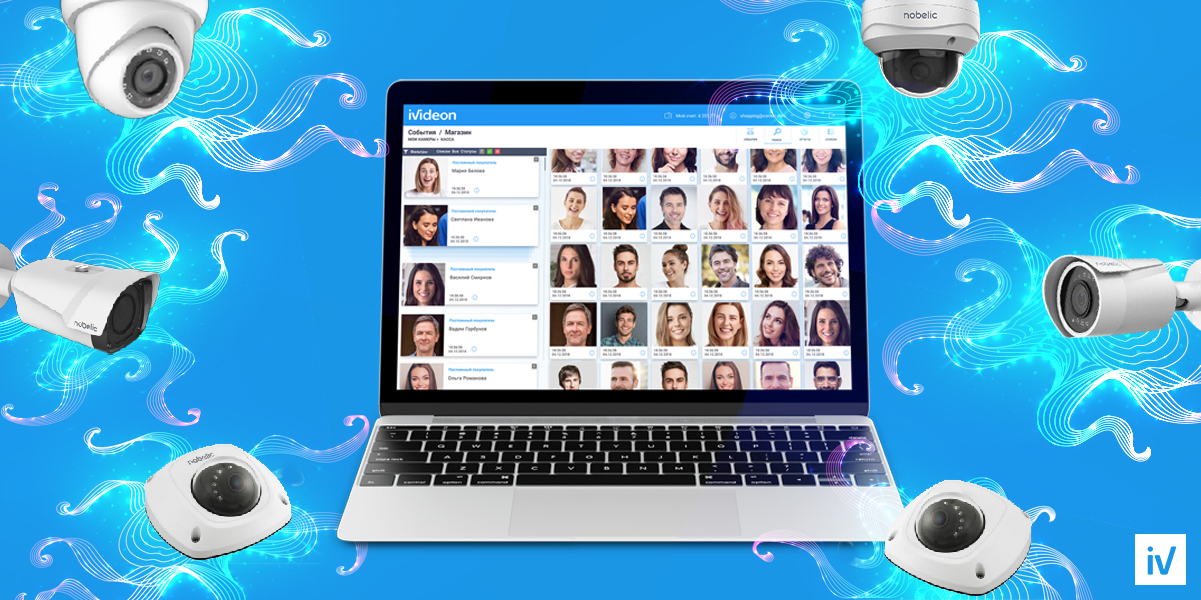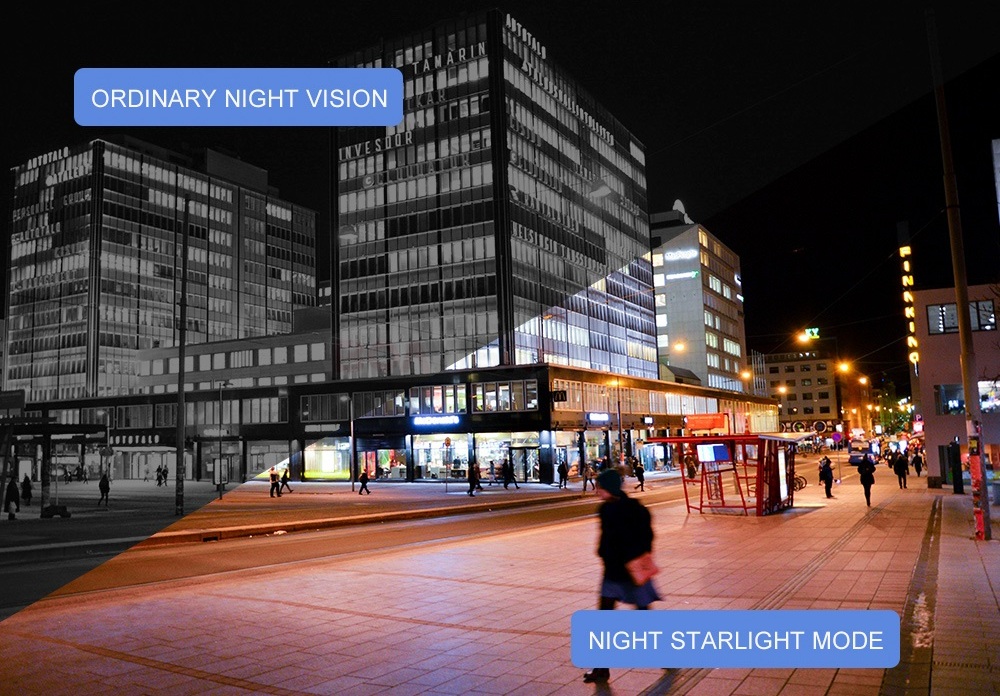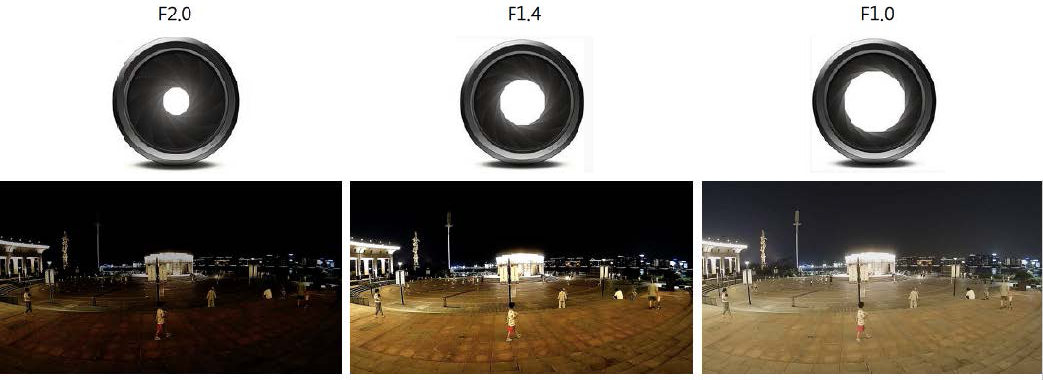New video surveillance standards: color at night, anti-noise, ePoE

With the launch of its first IP camera 23 years ago, Axis revolutionized the slowly evolving surveillance market. Axis Neteye 200 could not replace traditional analog systems, recording one frame per second in CIF format or every 17 seconds in 4CIF format with a resolution of 0.1 MP, but laid the foundation for a new class of systems - network video surveillance cameras.
The next wave of interest in video surveillance came with the development of cloud technology. The early launch of the Elastic Compute Cloud from Amazon Web Services and the Google App Engine was a milestone in the development of cloud computing. The development of software for managing, recording and analyzing the video stream in remote data centers has begun.
Finally, by 2020, cloud technologies have greatly defined the capabilities of hardware, including cameras with integrated analytics. Sometimes the cloud is not enough to solve business problems. Clients need cameras with increased computing power and tools for embedding into existing systems and subsequent scaling.
Such cameras are created with our participation.
The advantages of night shooting

Video surveillance systems should not “go blind” at night, so for more than 20 years, LEDs transmitting infrared radiation have been used in cameras - this is not a problem-free de facto standard.
Firstly, there are a lot of pixel noise in the black and white image, and some IR-illuminated cameras also broadcast a halo, which appears as a round white circle around the image.
Secondly, cameras with night vision, even at high resolution, can not cope with streaming face recognition and transmission of details. To break the technological deadlock, engineers developed sensors that can detect colors in low light.
In new cameras with Ivideon firmware, a Starlight matrix has appeared, recording color images even at night. To understand the quality of shooting under artificial lighting, watch the video:
The video mainly tells about our design models NBLC-P * 201F-ASD - these cameras will not appear in the online store, but we will use them when deploying video surveillance systems for business clients.
In other models with Starlight (NBLC-6231F, NBLC-3231F, NBLC-3261Z-SD, NBLC-2231Z-SD, NBLC- * 2 * 1Z-ASD), the picture will also be better in comparison with cameras of previous generations.

The Starlight matrix uses Starvis (Starlight Visibility) technology with backlighting. The CMOS sensor has a sensitivity of 2000 mV or more per 1 μm² (color image when shooting with a light source of 706 cd / m², F5.6), which gives high image quality in visible light and in low light conditions.
High photosensitivity of the sensor is achieved due to the location of the grid of conductors on the back of the photocells. Thanks to this, a wider range of light is collected on the photodiode, and, as a result, graininess and noise are reduced, and image clarity is increased.
In addition to the matrix, the sensitivity of the sensor and the amount of light, the processor, aperture and image processing algorithm affect the camera’s operation in low light conditions. Therefore, the cameras are equipped with powerful processors Ambarella S2LM (1 and 3 megapixels) and Ambarella S3LM (2 and 4 megapixels).

The more light comes in through the aperture, the brighter and more vibrant the image. Depending on the specification, the models will use an aperture of F1.0, F1.4 or F2.0 so that the maximum possible amount of light passes through the lens and falls on the sensor.
The brightness of the image in our new devices is 4 times higher than a conventional camera, and the color rendering has been significantly improved, which is especially noticeable in objects with artificial or natural night (stars, moon) lighting.
The camera will not work in complete darkness - the line passes at 0.1 lux, which roughly corresponds to the level of minimum illumination in open space in the full moon.
Clear sound solution

In the past, surveillance cameras did not record sound at all. The guards still could not track conversations in real time, and the quality of the microphones did not allow recording in conditions of numerous noise sources.
In order to record sound quality, especially in difficult conditions, we have developed a joint solution with the manufacturer of microphones Stelberry. Now Nobelic cameras are not only equipped with an external audio input, but also support the AAC codec, and work, depending on the specification, at 16 bit or 16 kHz, and are also immediately tested for compatibility with Stelberry microphones.
For a room with an area of 50-100 m², it is enough to install from two to four M-70 microphones and an MX-300 mixer, the total signal from which will go to the camera input. By adjusting the sensitivity (gain) of the M-70 microphone, you can limit the listening area to the necessary part of the room, thereby reducing the amount of noise in the recording.
The passband of the M-70 microphone is limited by the speech frequency range of 270 ... 4000 Hz, the signal-to-noise ratio is 63 dB. Such a sound may seem dull and unnatural. If you need a wider range of perceived frequencies of 80 ... 16000 Hz and natural sound, then the M-60 microphones are used - their sensitivity is also adjustable for a specific listening area.
Test M-60 and M-70 in .wav: listen with headphones.
Correct microphone placement

Buying cameras and microphones means only half the puzzle. Next, you need to work with the settings and competent installation, taking into account the characteristics of the room and the specifics of the purposes of sound recording.
In some cases, for correct recording, it is recommended to turn off automatic gain control (AGC) in microphones. In a noisy room, microphones with the AGC turned on are tuned to ambient noise and consider it the main source of sound. The talk signal against the background of amplified environmental interference is indistinguishable.
A suspended ceiling is an unsuccessful place for installing recording devices, as it perceives vibrations and multiple reflections of sound from walls. When mounting in a ceiling plate, you need to make a gap of 2-4 mm and attach a microphone so that the opening of the microphone capsule coincides with the hole in the plate.
Even worse, when the microphone is placed behind a suspended ceiling. In this case, the device only hears well the subceiling space, and the useful signal remains dull and illegible.
The best sound quality can be achieved with the location of the microphones on the walls 1.5 meters from the floor. The signal from microphones to the mixer without loss of quality can be transmitted through a cable up to 300 meters long, and from a mixer to a DVR or camera - with another cable up to 300 meters.
Scaling Systems with ePoE

With ePoE (Extended Power over Ethernet) technology, the signal is transmitted over a full duplex 10-megabit channel of a coaxial or vitopair cable over a distance of more than 800 meters or a 100-megabit channel at a distance of up to 300 meters.
The power standard supported by the new Nobelic models on all lines of the local ePoE network significantly increases the distance between the IP camera and the switch, and allows you to quickly build huge video surveillance networks.
The new equipment is much better than the current PoE standard, which works only on a line length of 100 meters. In addition, ePoE supports automatic configuration of equipment over the network and is suitable for migration from analog systems.
Nobelic's ePoE solution is suitable for rapid deployment of systems to large construction sites, parks, factories and other large-scale facilities.
Conclusion
Our main models are being replaced by Nobelic cameras with features that meet the new standards of the entire video surveillance industry:
- resolution from 2 to 8 megapixels;
- IR range up to 200 meters;
- advanced selection of focal lengths;
- color shooting in artificial light;
- motorized lens (in varifocal models);
- support for 800-meter communication channels with ePoE technology;
- additional interfaces: audio inputs, alarm inputs.
In this case, the difference in price of conventional IR cameras compared to Starlight cameras will be very small. In our store, the Nobelic NBLC-3231F model has already been laid out, the rest will be available in the fall. The specification of all other new products is available on the Nobelic website.
All Articles